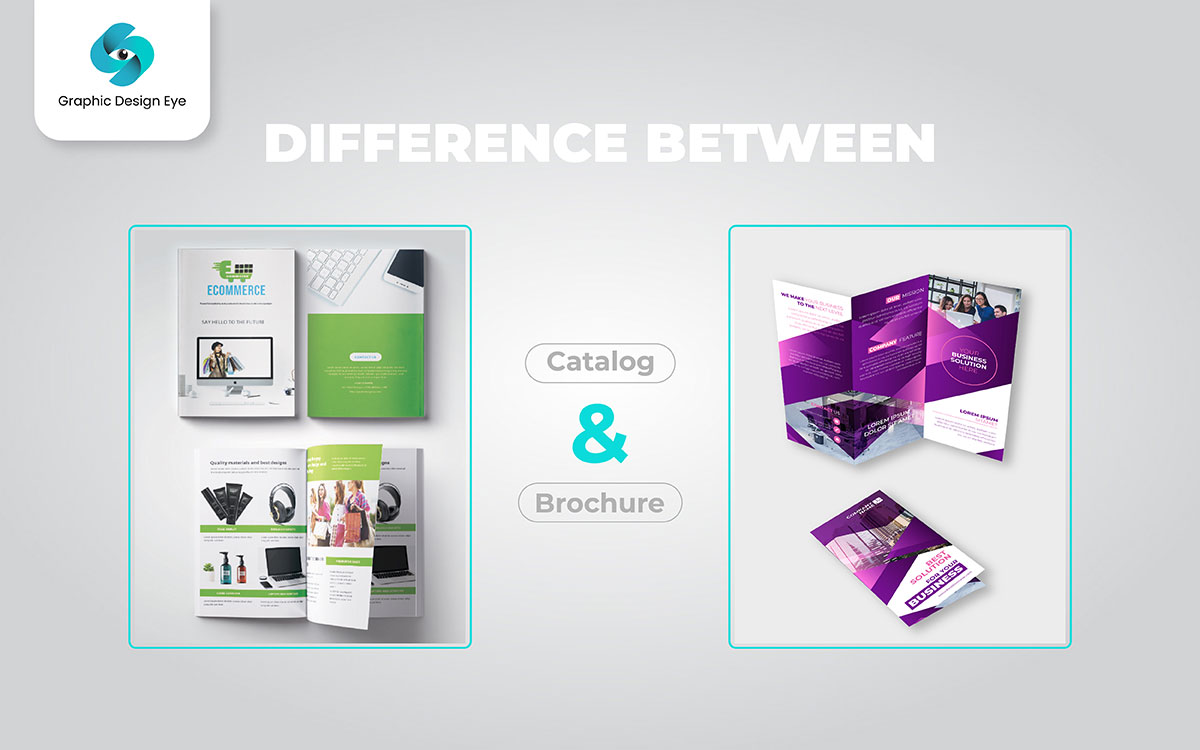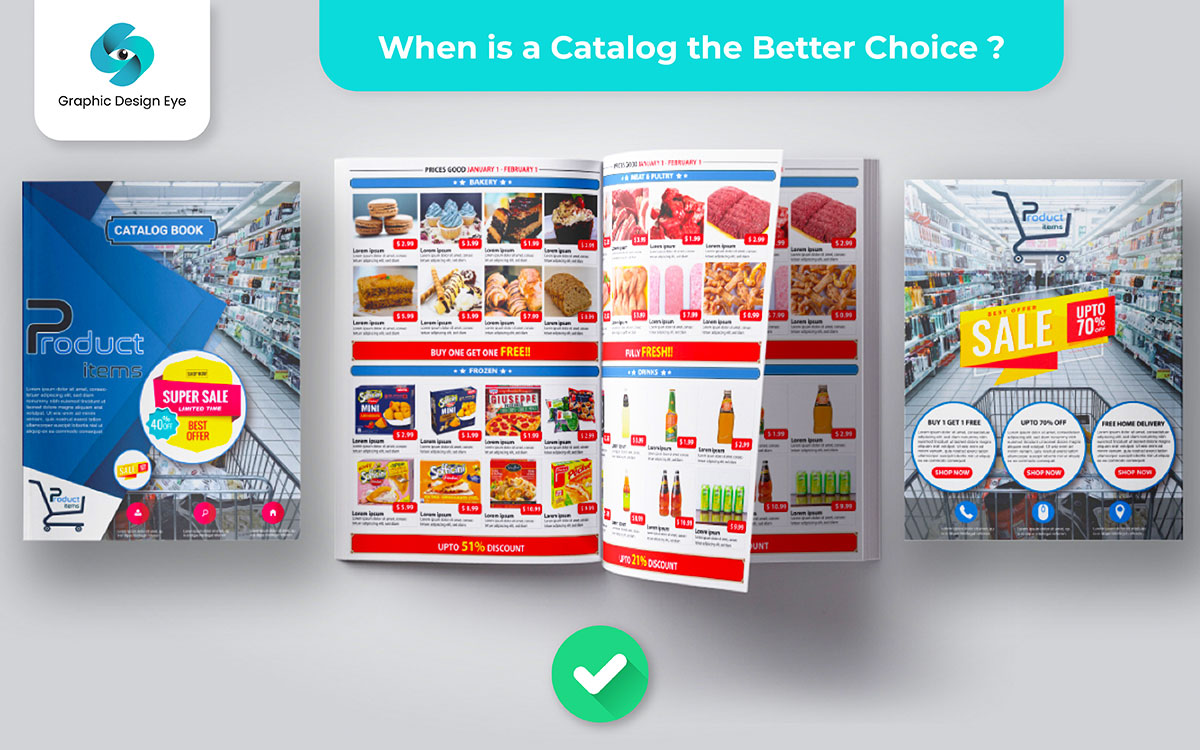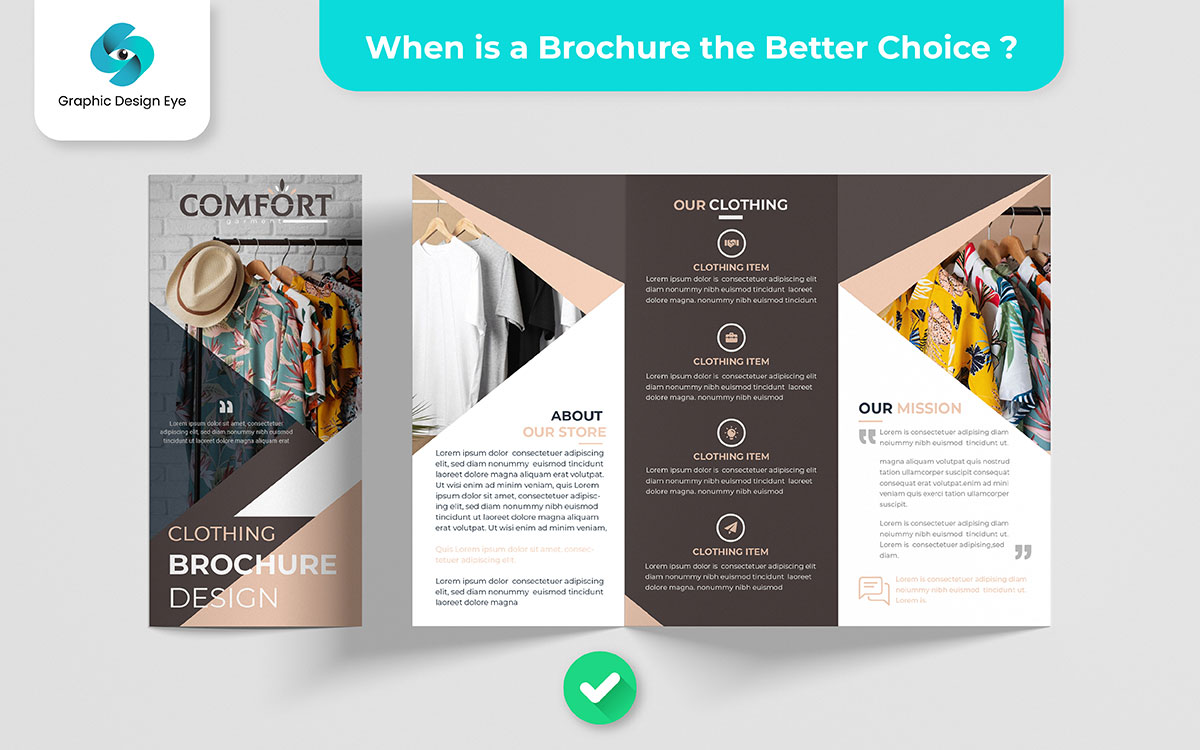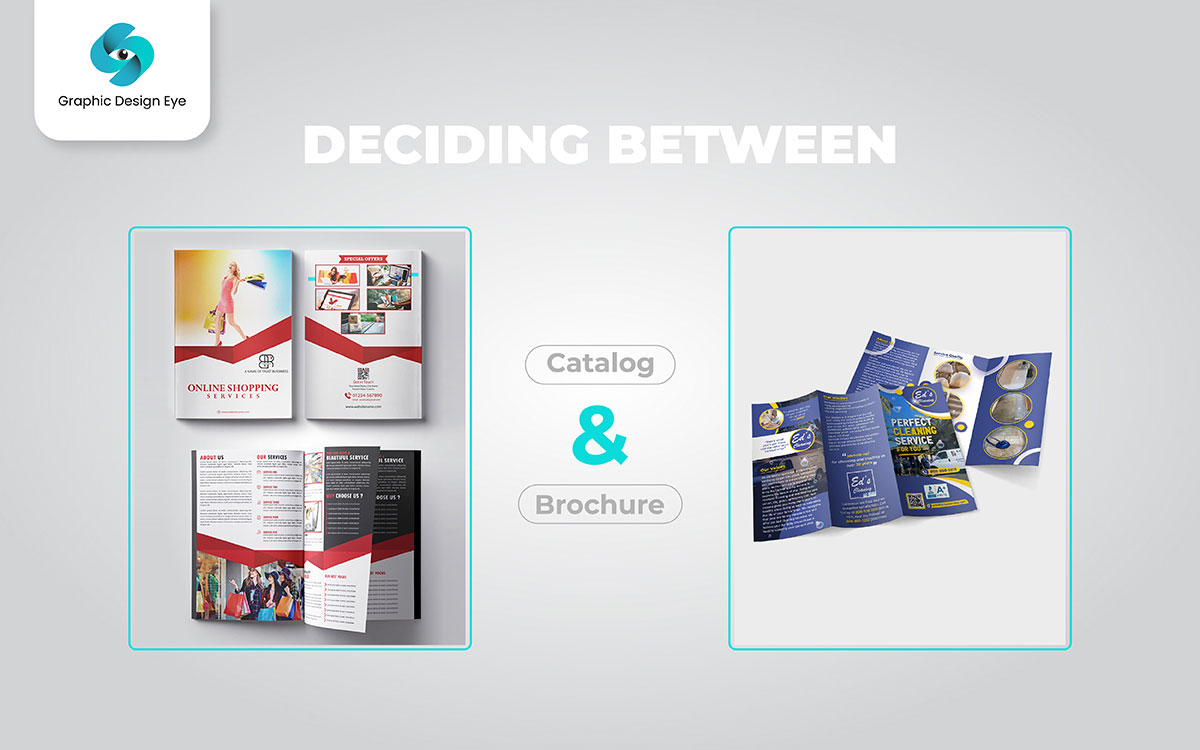However, a brochure, on the other hand, is more to the point. It shows only a few main products or services, which can seize the attention of all people right away without overwhelming them. It's good for raising curiosity at once. So, ask yourself what you want to bring into the foreground and how much information your customers really need. Let us break down the difference and figure out which one fits your goal best!
By the time you are through reading this, you shall have an understanding of the various aspects of catalog vs brochure. This will actually help you decipher the right manner to stay in tune with your customers so that the impression left on them lingers in the minds of each of them.

Now, put yourself in a place where you have to decide on a catalog vs brochure for your business. You might say, "What's the difference? Which one is right for me?" It really depends on what story you want to tell your customers. Here's how you can think about it, and we'll keep it simple.
A catalog design is like giving your customers a miniature version of your store, from top to bottom, chock-full of all the products or services you offer.
Example: If you had a line of clothes, they would contain every shirt, dress, jacket, and just about any other thing that can be found in the store. Your customer will flip through and see everything available, sort of like browsing your shelves on their couch. A catalog typically contains:
It's perfect for when your clients want to see everything in one place that you can offer them.
Now, think of a brochure as if it were one thing in the spotlight. It is like telling one story about a certain product or service. Instead of showing everything to them, one directs one's customers' eyes towards one key offer and explains to them just why this one is special.
For instance, if your business is selling something new, such as a design package for small businesses, for example, a brochure would explain the features, show a few examples, and tell customers why they should choose it. It's fast, easy to read, and designed to drive action, whether that's booking a call or visiting your website. A brochure usually contains:

Sometimes, your business has so much to offer, and your customers need some extra time to understand it all. That's when the catalog can really come into play: a simple and detailed guide showing everything you have to offer, so the choices would be a little bit easier to make for customers. Let's take a closer look at a few situations where the catalog could be just what's needed.
Imagine running a business with several products or services, say a furniture store or a fashion brand. You do not just have a few main items to choose from; there are different styles and sizes and lots of options. A catalog allows one to showcase everything at once without confusing a client.
For example, if you sell custom furniture, each will be offered in a number of colors, materials, and finishes. Within a catalog, they will all be in one place. Your customers can look through and compare, finding what suits them best. They will not have to question if there is something else; they will see all of it right there. The more choices there are, the more valuable a catalog becomes: it helps your customers feel confident that they are seeing all that you offer.
Benefits of Extensive Product Listings in a Catalog:
Sometimes, an absolute glimpse of something alone is not enough. If your product or service requires more detail, such as specification, dimension, benefit, or feature, then a catalog would be better. It is not about showing them what you're selling but rather telling the customer the whole story.
For example, if the products are high-end and tech-inclusive, such as smart home apparatuses or advanced kitchen utensils, your customer needs to know more than what the items look like. They want to understand how these products work, what makes them special, and why they are right for them. A catalog allows you to share such information in a readable manner without cluttering the design. The more your product requires an explanation, the better a catalog will work for you because it affords you space to clearly communicate everything.
Benefits of Detailed Information in a Catalog:
Of course, not every customer makes a decision just there and then. Some like to take all the time to look at the options available and compare them before buying. A catalog provides such an opportunity, given it is something that one can hold onto, browse at will, and check over again if need be.
Think of a house renovation company. Your customers might just want to sit back, have a cup of coffee, and go over the designs, colors, and materials at their own comfort and pace. A catalog will make it easy for them to do so. They may keep coming back to it, making notes, and even sharing it with family members. These longer processes often result in wiser and more contemplative decisions since the customer can feel well-informed and confident in the choices they will make.
Key Benefits of a Catalog for Long-Term Engagement:

You can only imagine attending a busy event, taking part in networking sessions, or having a special offer at your business. You need something that will leave a marketing piece if you instantly catch their attention, communicate your message concisely, and linger on even when it's been tucked away and they've walked far away. This is where brochures do their magic. It is now time to take a closer look at those situations where brochures are ideal.
Sometimes, you might not really need to tell the whole story about your business. You could have just one service, product, or offer that you actually want to highlight. A brochure is just perfect for this because it focuses on that particular one. Unlike a website or email talking about many things, the brochure puts a spotlight on just what you want to show. It is great for a new product, a seasonal promotion, or any special event you may be planning. Your message gets where it's going fast and clear with no interference.
For instance, if one is offering a new service, the brochure gives an opportunity to explain the salient features of the service in question, indicate where the importance is, and direct people further in an action step like visiting your website for more information or personally calling them. It's an easier way of keeping the spotlight on what counts most.
Now, you can very easily call to action: direct the reader to the next step by either visiting your site or calling you directly, which is rather easy.
What a brochure really does is give you that opportunity to make that big, bold statement visually. And people just intrinsically love beautiful design: colors and images and ways of fit can command your attention, out and out. First impressions mean a great deal in business. You take that stellar visual along with a specific message and create something memorable.
What is unique about brochures is that they go beyond words and are altogether a complete experience. You may use your brand colors, put striking images of your products or services, and design everything informative but eye-catching. It is not an ad; it's telling through design. And, if done right, that is what will leave a mark on someone even after they leave the meeting or the event.
Every time you attend a trade show, go to an exhibition event, or even meet your clients within the confines of your office complex, brochures seem to be the best thing to distribute. They are easy to give out and quite easy for people to carry with them. What sets them apart further is that they seem to represent your business with its clearness and completeness in one compact, physical form alone. This is something that can be taken away by people for themselves, can be held onto, and flipped through at their own pace later on.
Unlike a flyer or business card that might be casually thrown away, brochures tend to stick around. They often find their places on desks, kitchen counters, or even inside briefcases, staying there for a considerable amount of time. This way, days and even weeks after an event or meeting has come and gone, your brochure acts as a constant reminder about your services on offer, any special offers, or upcoming events. Brochures leave an indelible mark of professionalism and everlasting reliability that cannot be accessed with digital advertisements or emails.
Remember: Long after the event is over, the brochures remain on the desk or countertop, continuing to sell your brand.
More Information: A brochure can contain more information than could be made available on a business card or flyer.

With a catalog vs brochure, it might be a bit overwhelming to make a choice in case you're not really sure where they fit into the needs of your business. No need to worry! I'll take you through the main factors that you should consider when choosing between the two in as simple and relatable a way as possible. Let's get started!
Here are some important factors you can consider while deciding catalog vs brochure.
The first consideration while choosing between catalogs and brochures is, of course, the purpose your business wants to serve. Do you want to showcase a wide range of products in detail or just introduce your business and grab attention? That's the core difference.
So, if you want to make a deep dive into your offerings, then the catalog is the best choice. If you want to have some kind of quick overview, just to spark some interest, maybe a brochure would be more fitting.
Next up is the people you're trying to reach—your audience. This is key because you need to think about how much information they actually want or need from you.
Ask yourself: Does my audience need to be taken through every detail, or should they just get an introduction to it? This will present you with the best avenue to take.
Lastly, you have to consider the cost. This is significant because the number of catalogs and brochures ranges from reasonable to very expensive.
Take a closer look at your budget, then. If this is a case where you can fork out just a little bit more and find yourself in need of that extra detail, then the catalog is for you. If your answer to that is no and you want something cheaper, a brochure will be your buddy.
Now, here are some industry-specific recommendations for choosing between catalogs and brochures: easily labeled into three main categories, retail, service-based businesses, and nonprofits all having different needs for choosing what's right for you depending on what message you want to send and how your audience interacts with your brand.
If your business is retail, it may very well boil down to a choice between catalog and brochure, depending on the number of products you are offering and just how much information customers are going to need.
Recommendation: Go for a catalog if you have plenty of products. Utilize brochures for promotions or special collections.
For service-based businesses, such as cleaning companies, law firms, or graphic designers, the approach is ever so slightly different. It is less about listing your products and more about showing value for the things you do.
Recommendation: Brochures will be good for any service-based business; after all, they are easy and straightforward. Use a catalog only if your services require explanation by way of demonstrations or something along these lines and you have an extended range.
For nonprofits specifically, the question between catalogs and brochures really becomes one about style and approach in engaging donors and supporters. You have to decide whether you want to tell a story or raise some funds.
Suggestion: Tell your story and motivate action with a brochure. If you need to showcase the range of your programs involved, or if you're having a merchandise campaign, a catalog may be more fitting for such instances.
Sometimes, using both a catalog and a brochure will be the best approach for your business or organization if its needs are highly diverse. This hybrid approach, in such cases, will let you harness the strength of each format. Let's go ahead step by step so you can see when combining both makes sense and how successful examples have used this approach.
A hybrid approach is best when your business needs to communicate levels of information at different levels to various audiences. Following are some key situations where combining catalogs and brochures could prove to be just ideal:
The following are some examples of how different businesses have successfully incorporated catalogs and brochures to meet their goals:
A furniture retailer can make a pamphlet containing a new product line with glossy pictures and a just description. That pamphlet draws potential customers. Then, in a store or on a website, they have a catalog for their customers in order to see the entire collection in depth, with more details on the specifications, price list, and customization options. This way, the brochure will be drawn, and the catalog will seal the deal.
Imagine a home renovation company. They may want to give away a pamphlet with the description of services provided, like kitchen remodeling, bathroom renovations, and outdoor projects, so that their potential customers may get an idea of what they actually do and how well they do it. Then, the same company provides a catalog that itemizes service packages, timelines, and pricing for each specific package. This brings in the combination of helping customers in the preliminary steps of researching and then detailed information for those prepared to act upon the service.
It could be used to bring its mission to a nonprofit and, in an easy and emotionally compelling way, to highlight key programs via a brochure. Then, at the fundraising event, they will pass out the catalog that lists different tiers of donations and what exactly each donation will impact, like sponsoring child education, building wells, or medical clinics. This approach will help people more easily relate to the cause through the brochure and pledge certain activities through the catalog.
When thinking about cost-effectiveness between a catalog and a brochure, it depends on a few things, like how big your project is and how much information you need to share.
Size and Pages:
Purpose:
Long-term Use:
Real Opinion:
From my experience, if you need to save money and don’t have too much to share, a brochure is the most cost-effective choice. It does the job without costing a ton. If you need to showcase a lot of stuff, a catalog can be worth the extra money, but only if the investment makes sense for your business.
Here’s the exciting part: The choice depends on what you need to say. If you’re launching a new service and want to really sell that one thing, a brochure will help you tell that story quickly and effectively. It’s like a little teaser, showing just enough to get someone excited.
But if your goal is to let customers see everything you offer, a catalog provides a comprehensive view. It’s like a detailed menu, allowing customers to explore and compare options.
Want to stand out? We can help. At Graphic Design Eye, we specialize in both catalog and brochure design services. Whether you need a sleek brochure to highlight your best features or an extensive catalog to share the full picture, we’re here to make your vision a reality. Let us help you stand out with designs that speak to your audience.